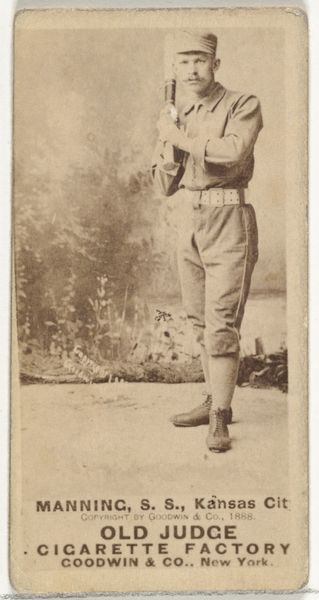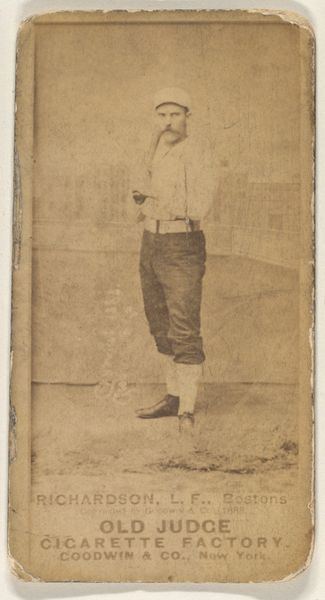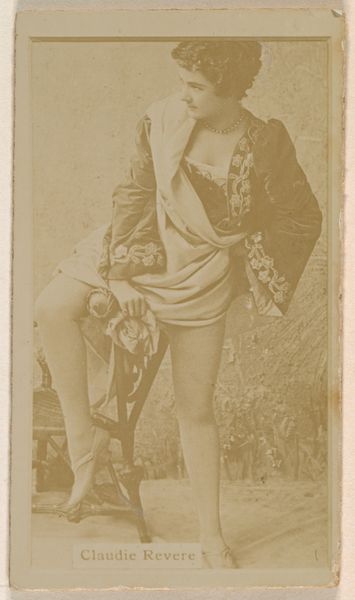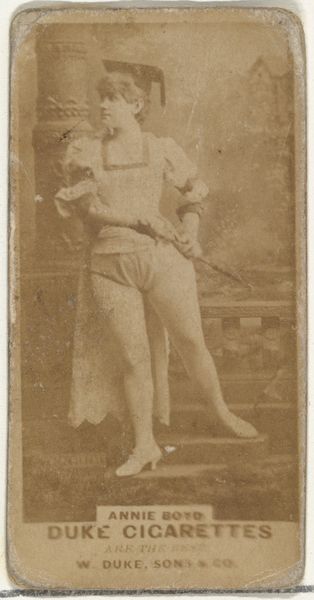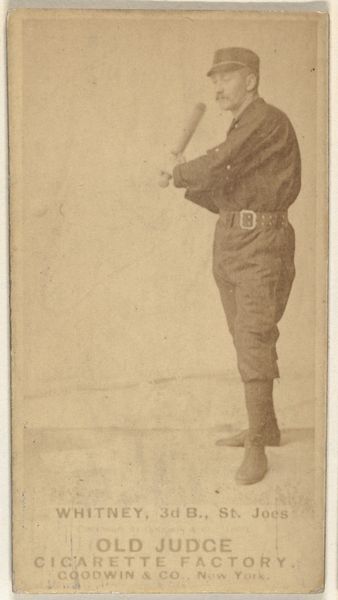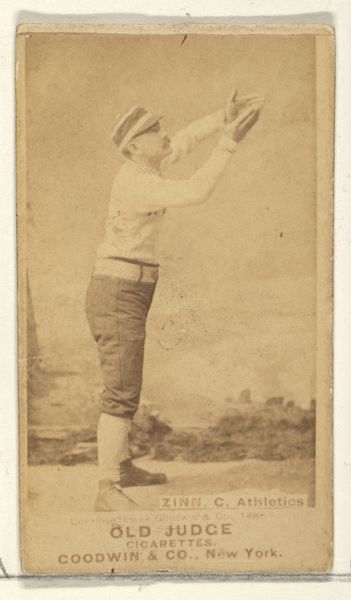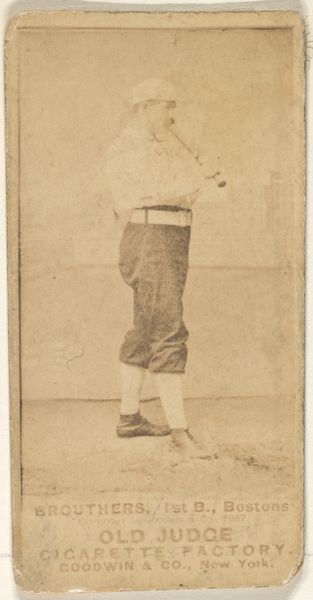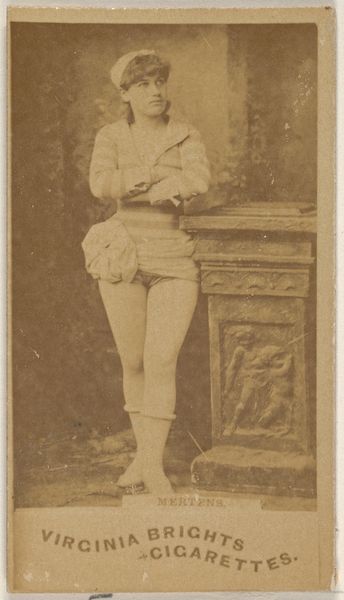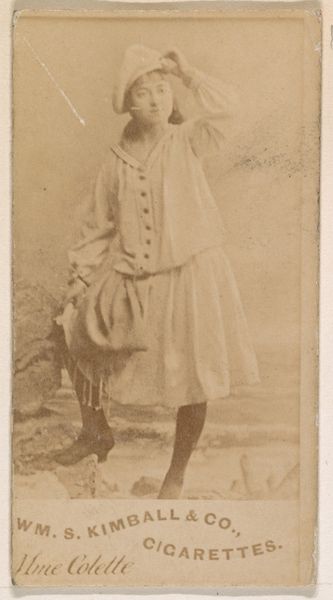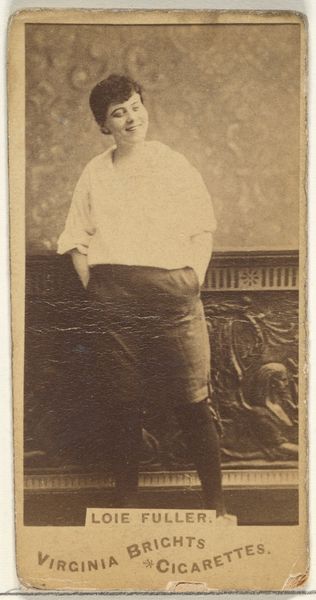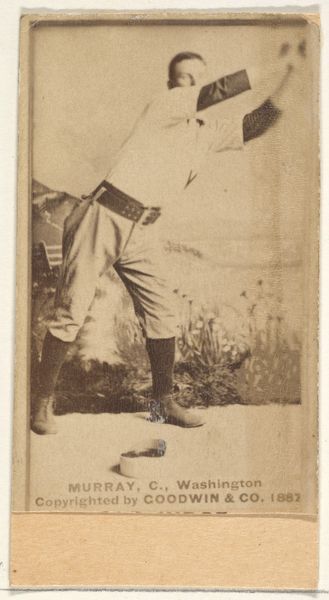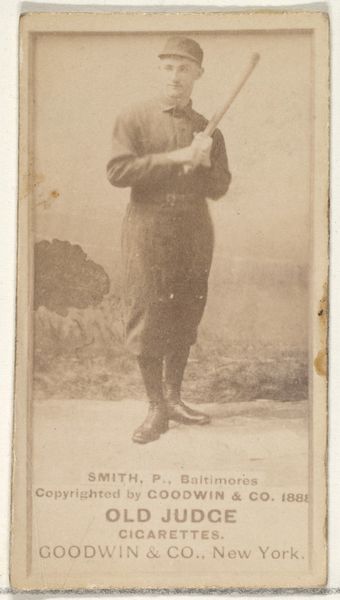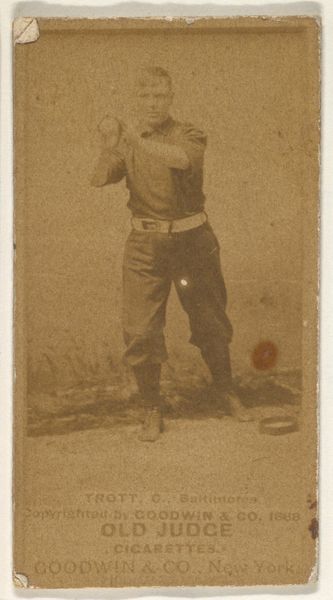
Sterling, Pitcher, Minneapolis, from the Old Judge series (N172) for Old Judge Cigarettes 1888
0:00
0:00
drawing, print, photography
#
portrait
#
drawing
# print
#
baseball
#
photography
#
athlete
Dimensions: sheet: 2 11/16 x 1 3/8 in. (6.9 x 3.5 cm)
Copyright: Public Domain
Editor: Here we have "Sterling, Pitcher, Minneapolis, from the Old Judge series (N172) for Old Judge Cigarettes," a baseball card produced by Goodwin & Company in 1888. The sepia tone and small size give it an antique feel. It looks like a posed photograph that was reproduced as a print. How do you interpret the significance of such an artifact? Curator: It's a seemingly simple baseball card, but it opens a window onto the cultural landscape of the late 19th century. We need to consider it as an intersection of sport, commerce, and early photographic practices. This card reflects a burgeoning cult of celebrity surrounding athletes and the exploitation of their image for profit. Editor: Exploitation? Curator: Absolutely. Who benefited most from these cards? Was it Sterling, the pitcher? Or was it Goodwin & Company who used his image to sell cigarettes? Also, consider the scarcity of baseball players of color during this period. Whose stories were being told, and whose were being erased or excluded from the narrative of American sport? How does this impact modern diversity in sports? Editor: So, you're saying this card isn't just about baseball, but also about labor, race, and power dynamics. Curator: Precisely. By understanding its context, we can engage in dialogue about whose stories get told, how, and for what purpose. It prompts us to interrogate these inequalities in contemporary media and representation, encouraging us to challenge dominant narratives and promote more inclusive perspectives. Editor: I never thought I could learn so much from such a simple piece! It definitely highlights the need to be critically conscious. Curator: Agreed, now more than ever. Examining seemingly small artifacts can give us big insights!
Comments
No comments
Be the first to comment and join the conversation on the ultimate creative platform.
